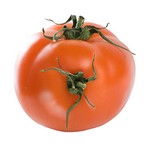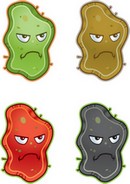Health benefits of ginseng tea include a number of curative and healing properties. The tea is derived from a perennial plant root. The major health benefits of ginseng tea are due to the naturally occurring chemicals ‘ginsenosides’ present in it. Ginseng tea has earned popularity all over the world as an herbal drink. According to American Academy of Family Physicians, ginseng tea possesses anticancer properties.
India, China, Japan and even some western countries are known to cultivate ginseng tea for its rich health benefits. In US and Canada, weather conditions favor the cultivation of ginseng, and ginseng tea is known to be exported from US to many Asian countries. American ginseng tea is rich in herbal lysimachiae, panax quinquefolium and radix glycyrrhizae. The researchers at University of Toronto in Ontario, Canada have proved that ginseng is effective in reducing diabetes.
Benefits: Ginseng tea is considered as one of the most nutritious herbal supplements available in the world. There are mainly 3 types of ginseng tea –American, Asian and Siberian Ginseng. All are beneficial for human health and vitality. Some of the curative properties of ginseng tea are as follows:
Though ginseng tea is an herbal beverage, medical reports also indicate that prolonged consumption of this tea may lead to sleeplessness and heart ailments. So, it is best to consult a competent physician before you start drinking ginseng tea on a daily basis.
This article was contributed by Seema Adnani.
Source: OrganicFacts.net
India, China, Japan and even some western countries are known to cultivate ginseng tea for its rich health benefits. In US and Canada, weather conditions favor the cultivation of ginseng, and ginseng tea is known to be exported from US to many Asian countries. American ginseng tea is rich in herbal lysimachiae, panax quinquefolium and radix glycyrrhizae. The researchers at University of Toronto in Ontario, Canada have proved that ginseng is effective in reducing diabetes.
Benefits: Ginseng tea is considered as one of the most nutritious herbal supplements available in the world. There are mainly 3 types of ginseng tea –American, Asian and Siberian Ginseng. All are beneficial for human health and vitality. Some of the curative properties of ginseng tea are as follows:
- Menstrual Problems: American Ginseng tea is well known for its cooling effect. It is recommended for young women who suffer from menstrual cramps and distress. It minimizes the stomach pain associated with menstruation.
- Low Blood Pressure: Asian ginseng tea is a strong beverage. It is very effective for people who have low blood pressure. This energetic drink keeps you on your toes all day long.
- Brain Food: Ginseng tea is an herbal drink that acts as a stimulant to the brain cells. It improves the concentration power and thinking capabilities. For improved functioning of the brain cells, ginseng tea is highly recommended for students.
- Obesity: If you want to shed those extra pounds, ginseng tea would help you in your dietary habits. This herbal tea is popular as a natural appetite suppressant. Consuming ginseng tea would also provide slimness to the body.
- Sex Problems: Men with erectile dysfunction disorder can consume ginseng tea as it lessens the symptoms of such sex related conditions.
- Cancer: Studies indicate that people who drink ginseng tea have less risk of developing cancer. Medical experts highly promote people to drink such herbal teas to eliminate the risk of cancerous growth in the body.
Though ginseng tea is an herbal beverage, medical reports also indicate that prolonged consumption of this tea may lead to sleeplessness and heart ailments. So, it is best to consult a competent physician before you start drinking ginseng tea on a daily basis.
This article was contributed by Seema Adnani.
Source: OrganicFacts.net


 A 2001 study conducted by Oregon State University compared white tea and green tea for their cancer fighting potential.
A 2001 study conducted by Oregon State University compared white tea and green tea for their cancer fighting potential. A 2003 study conducted by Oregon State University found that white tea is highly potent in treating colon cancer in mice.
A 2003 study conducted by Oregon State University found that white tea is highly potent in treating colon cancer in mice. A 2004 study conducted by Pace University concluded that white tea fights bacteria, viruses and fungi.
A 2004 study conducted by Pace University concluded that white tea fights bacteria, viruses and fungi. A 2003 study suggested that white tea may slow down aging skin conditions such as wrinkles and pigmentations. This study was conducted jointly by University Hospitals of Cleveland and Case Western Reserve University.
A 2003 study suggested that white tea may slow down aging skin conditions such as wrinkles and pigmentations. This study was conducted jointly by University Hospitals of Cleveland and Case Western Reserve University.






















